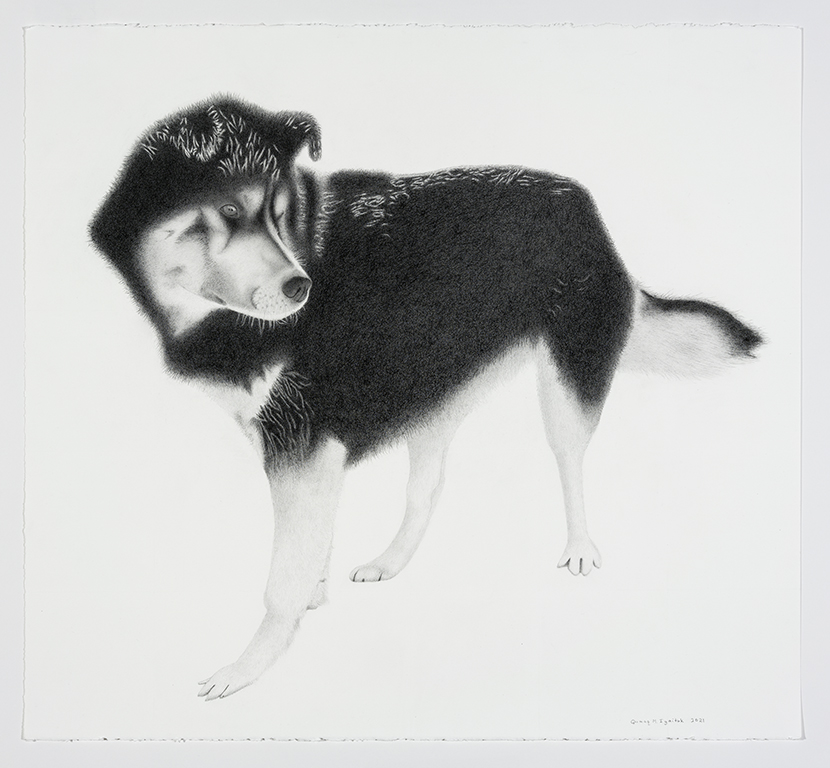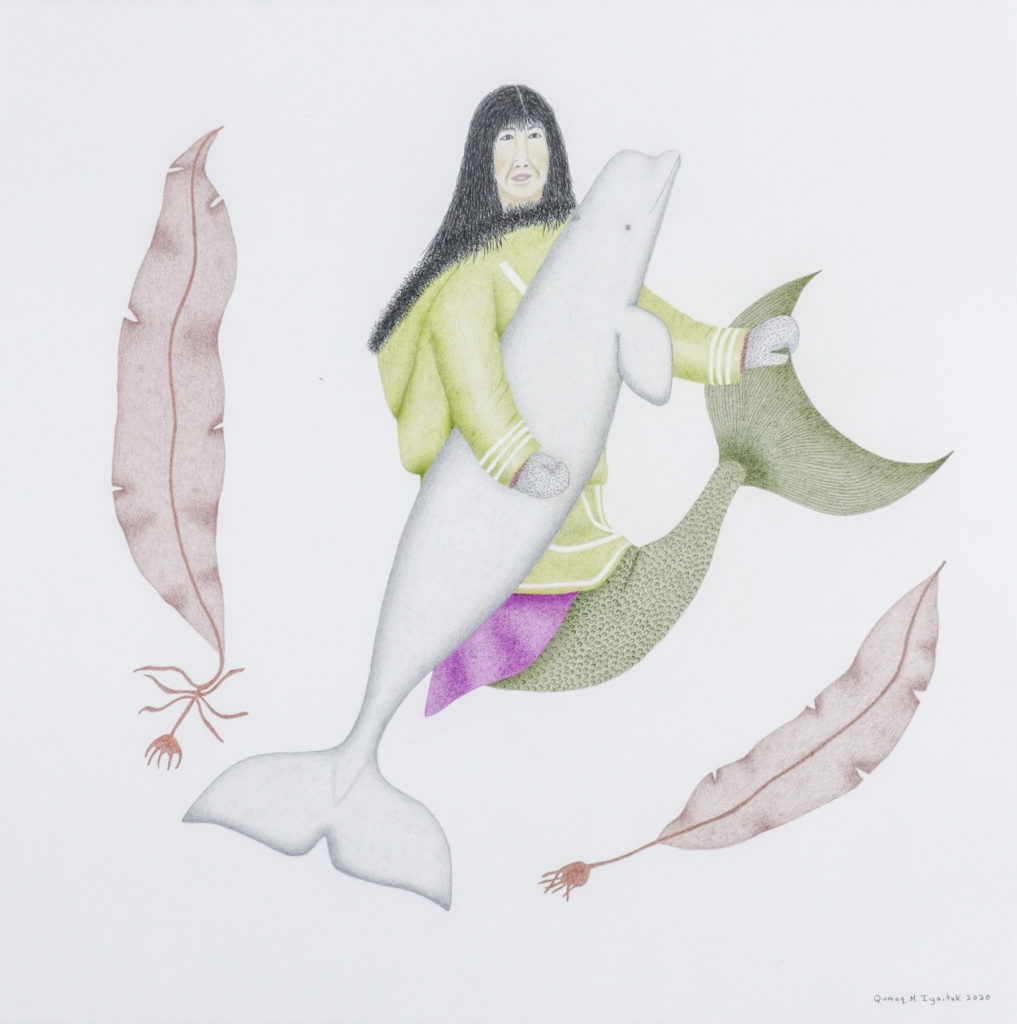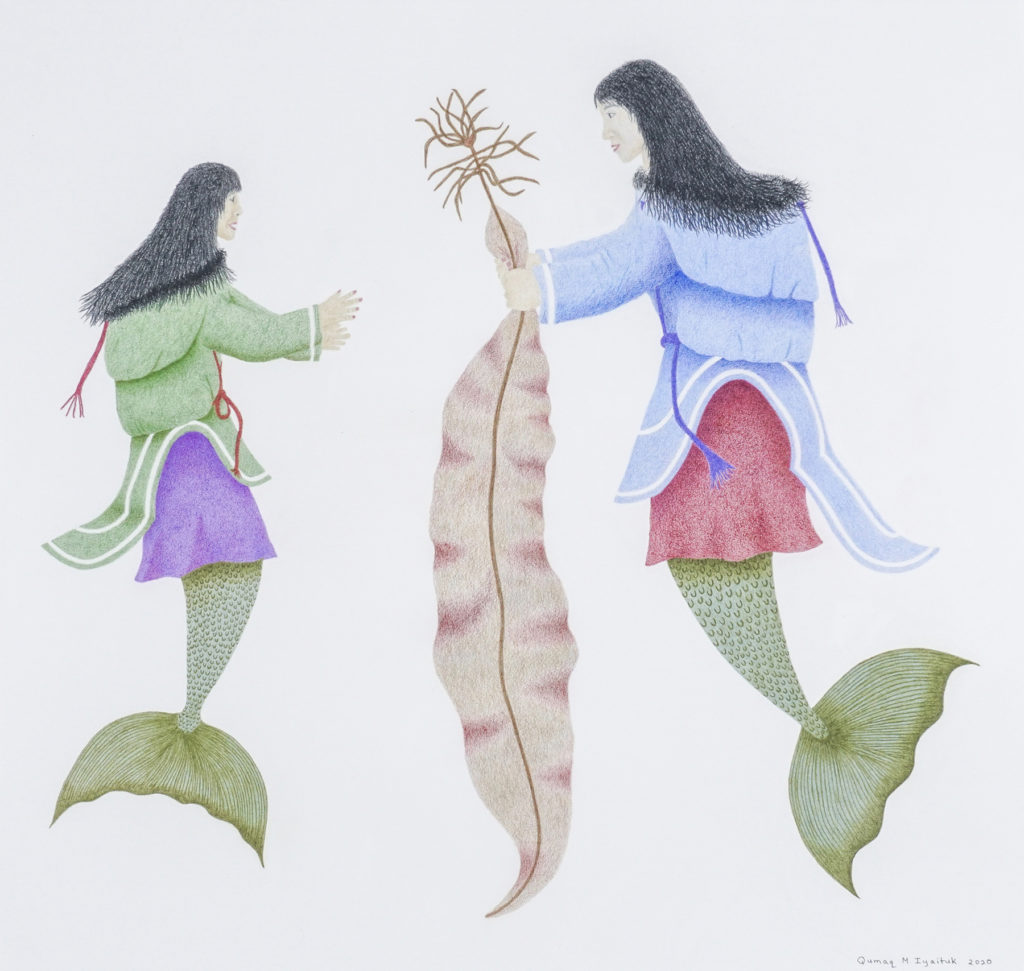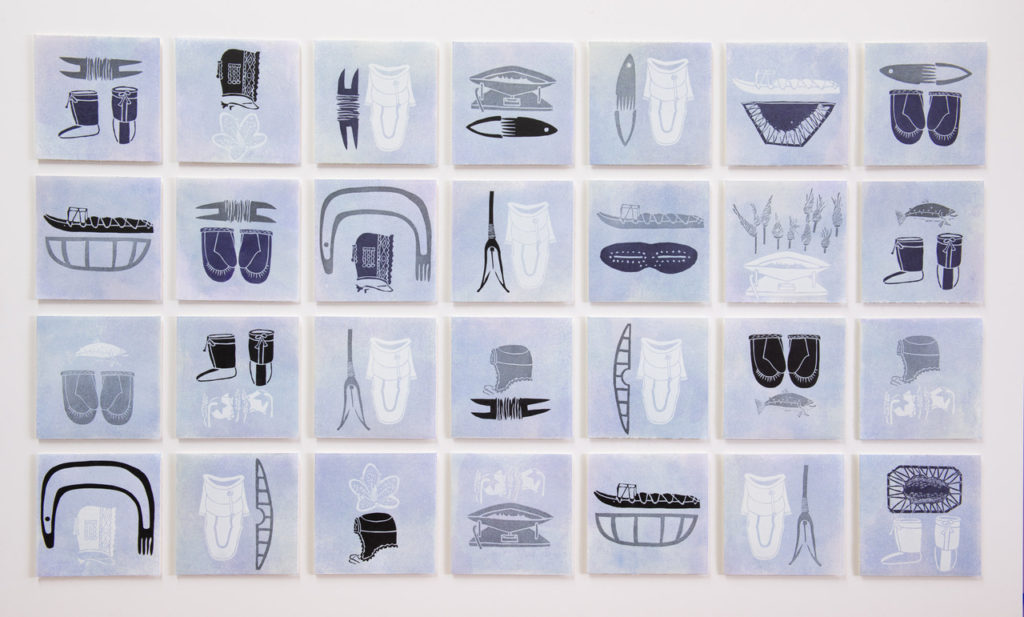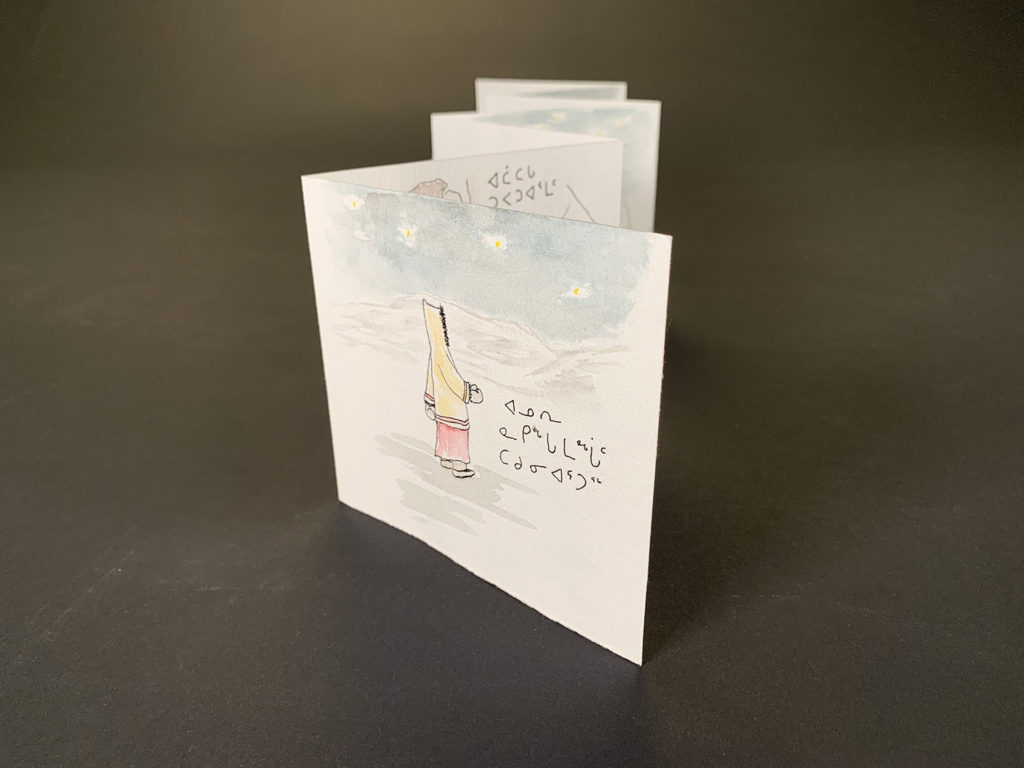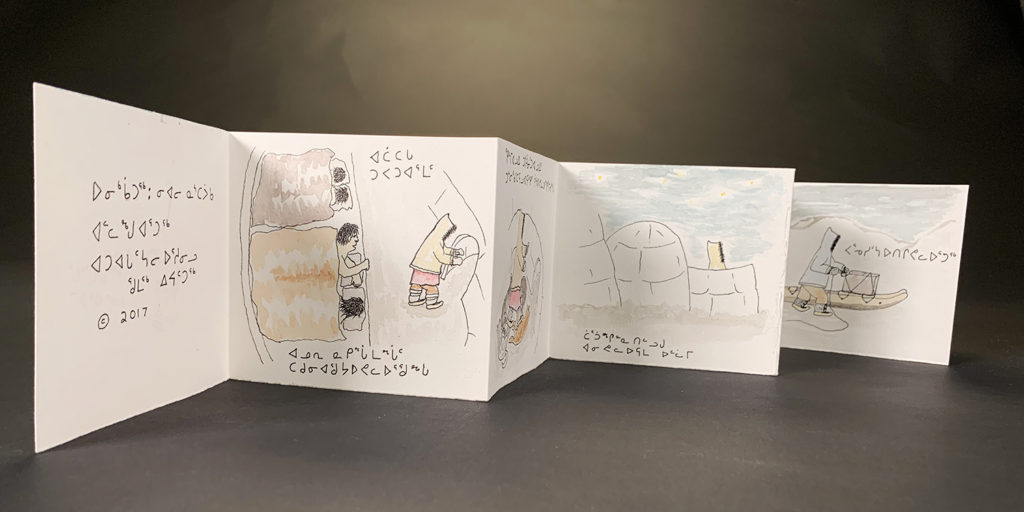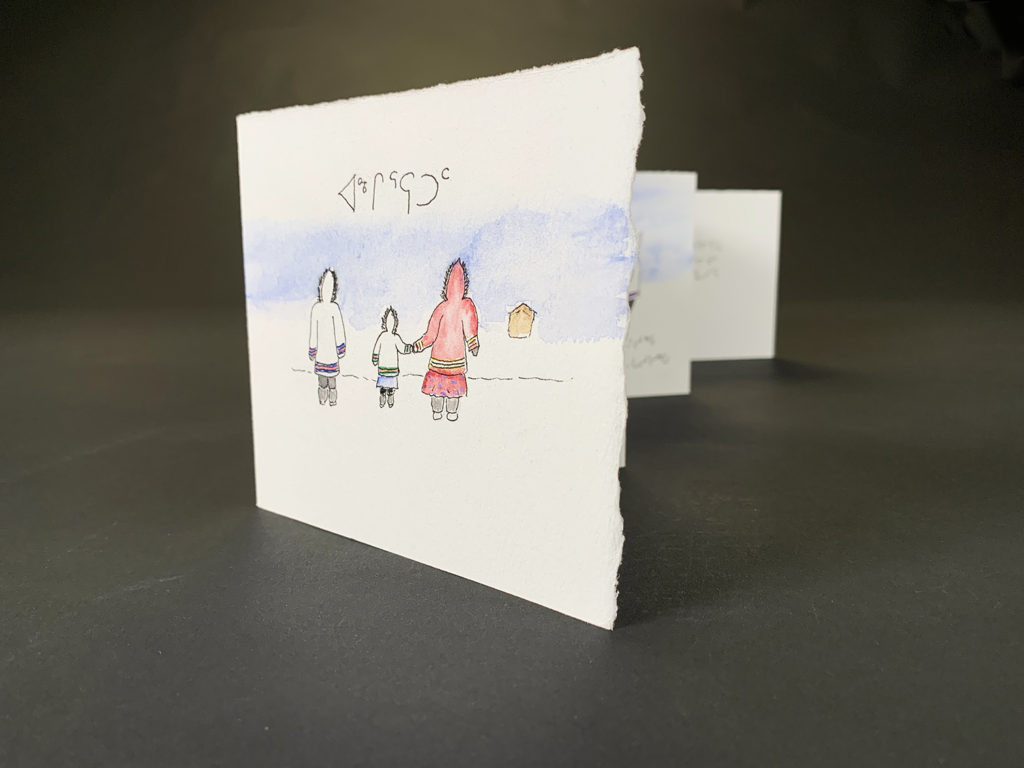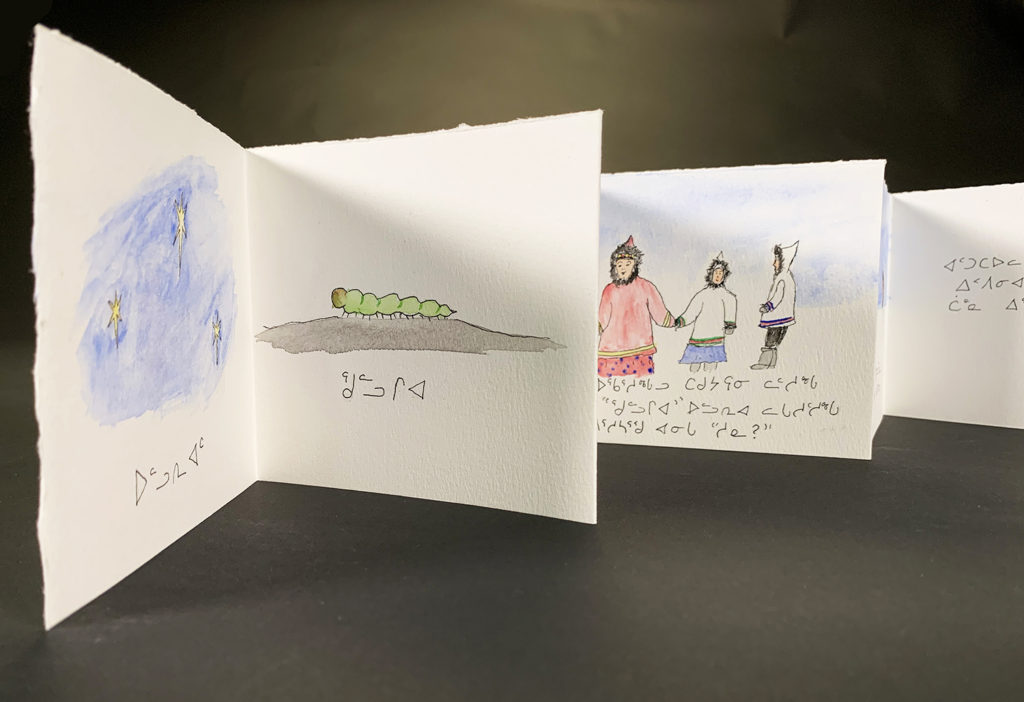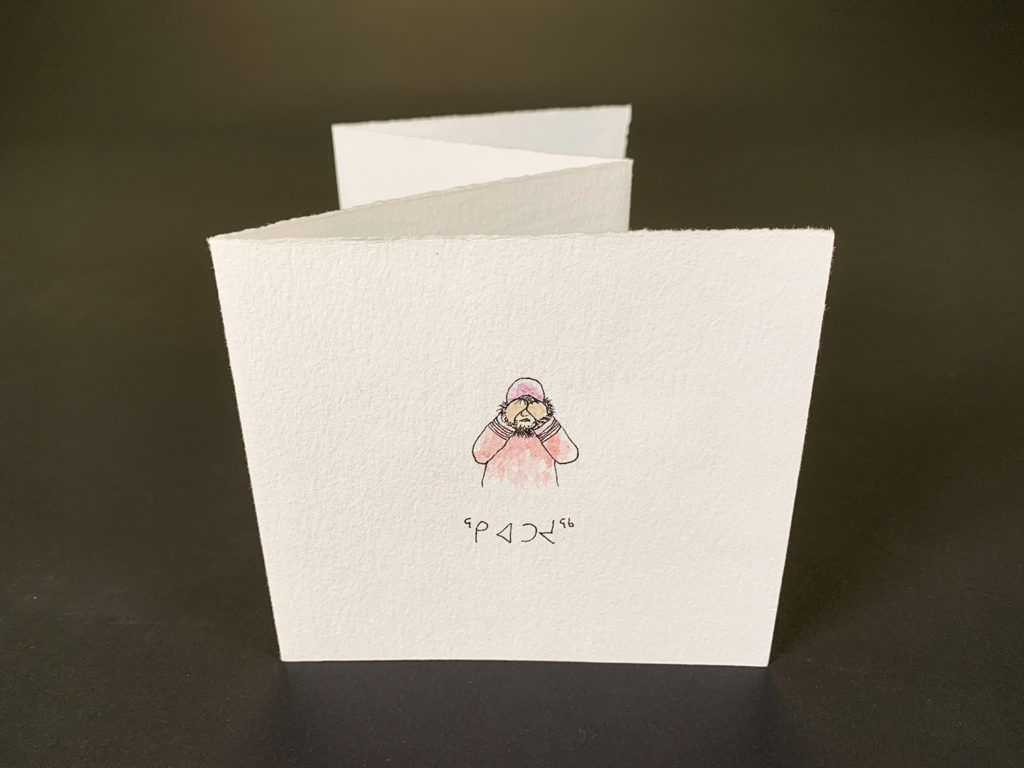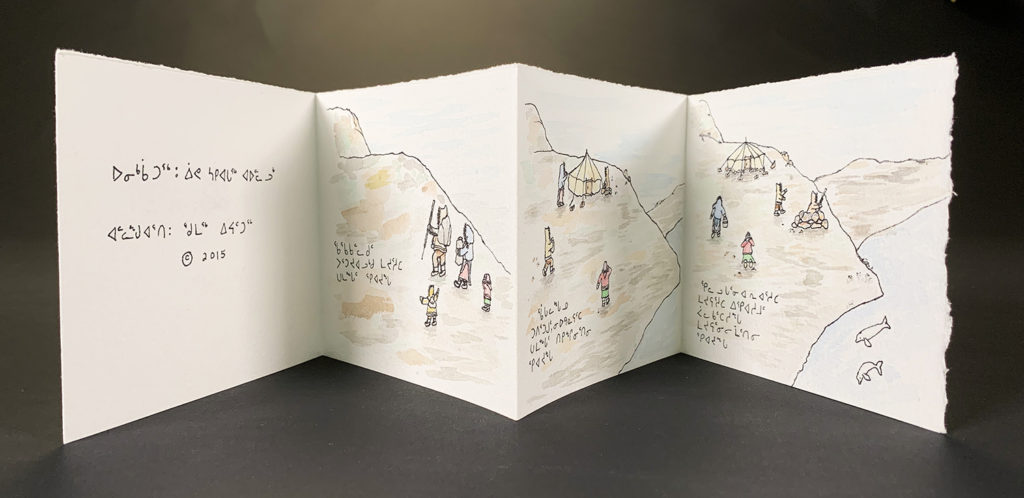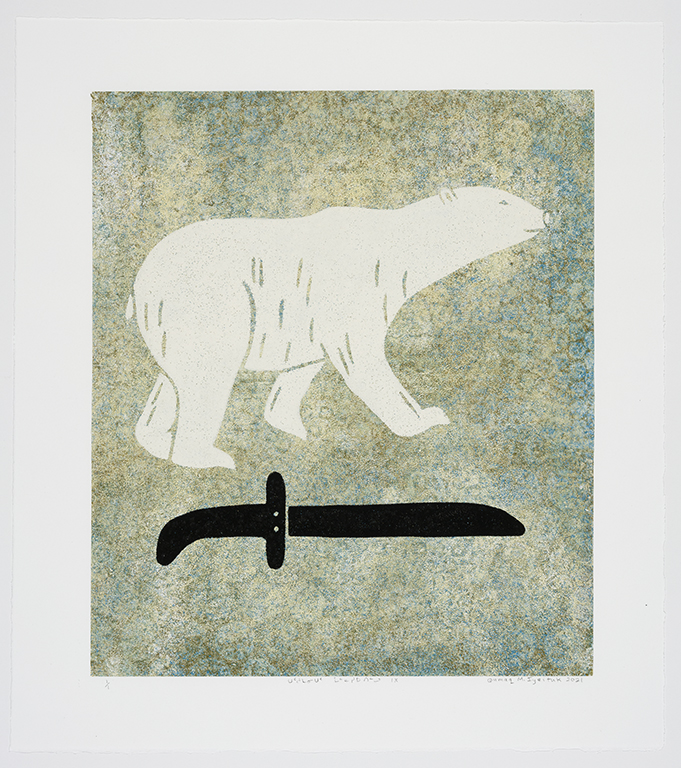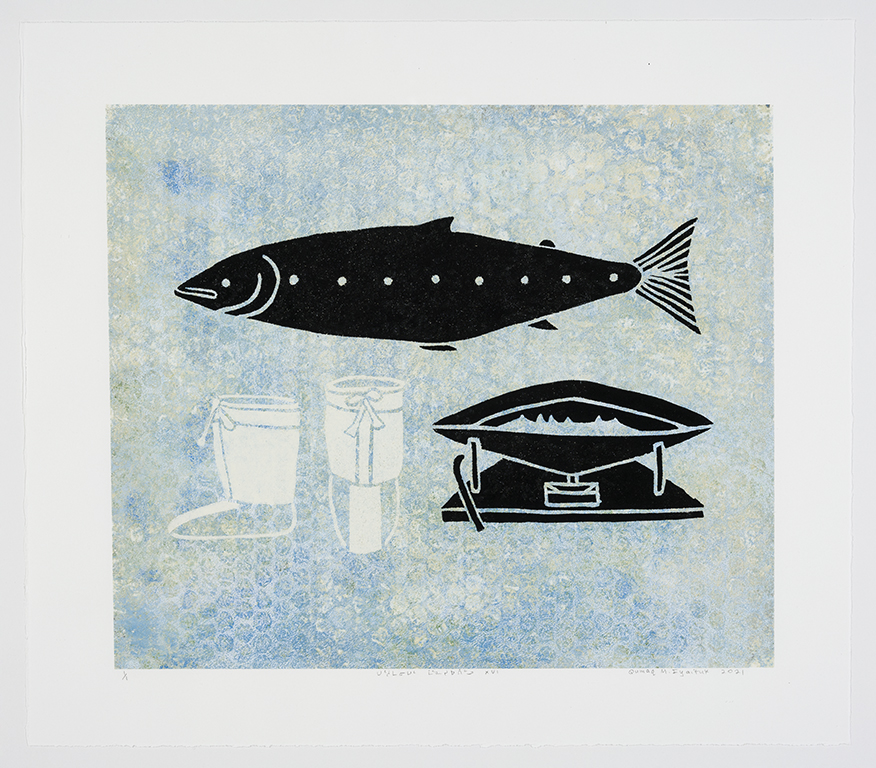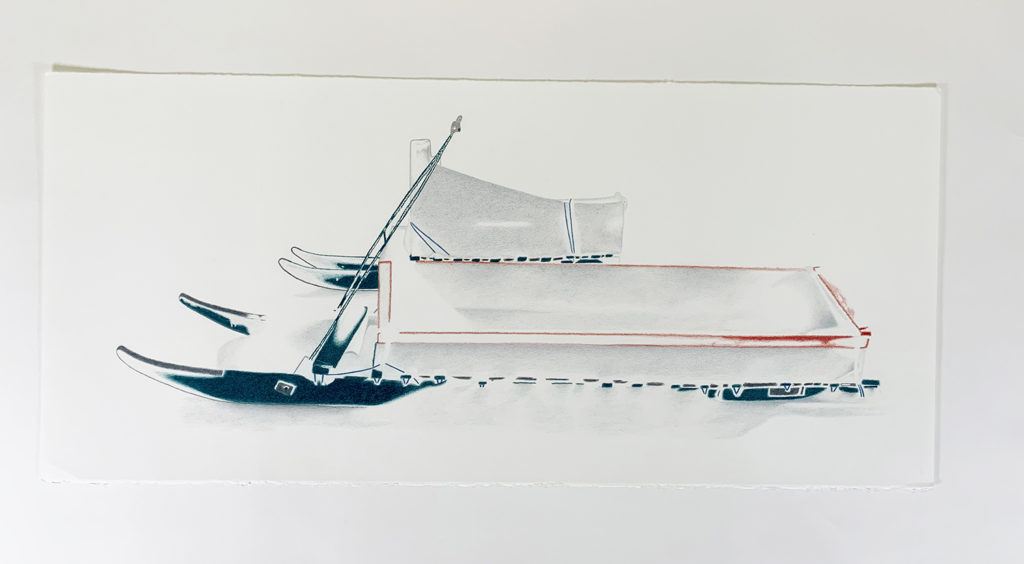ᖁᒪᖅ ᒪ. ᐃᔦᑦᑐᖅ | Qumaq M. Iyaituk
ᖁᒪᖅ ᒪ. ᐃᔦᑦᑐᖅ ᐃᕗᔨᕕᒻᒥᐅᖅ ᐊᒥᓱᐃᑎᒍᑦ ᑕᑯᒥᓇᕐᑐᓕᐅᕐᑎ ᒥᖑᐊᖕᖑᐊᓱᓂ ᐃᒪᓪᓕᓲᓄᑦ, ᐊᓪᓚᖑᐊᕐᓱᓂ, ᐃᒪᓪᓕᓲᒍᖕᖏᑐᓂᓗ ᒥᖑᐊᕈᑎᓂᒃ ᐊᑐᕐᓱᓂ ᐊᒻᒪᓗ ᓇᑎᑦᓴᔭᓂᒃ ᐊᕿᑦᑐᔭᓂᒃ ᓴᓇᑦᓱᒋᑦ ᐸᑎᑦᑎᒐᓕᐅᕐᓱᓂ. ᐊᓕᐊᒋᔭᓕᒃ ᐊᑐᕆᐅᕐᓴᕆᐊᒥᒃ ᐊᓯᖏᓐᓂᒃ ᓴᓇᖕᖑᐊᒐᑦᓴᓂᒃ ᐱᕕᑦᓴᖃᓕᕋᒥ. ᐱᓇᓱᐊᕈᒪᐅᑎᖃᓲᖅ ᓴᓇᕐᕈᑎᓂᒃ, ᐅᓂᒃᑳᓂᒃ ᐅᓪᓗᒥ ᐊᑑᑎᔪᓂᒃ ᑐᓵᕙᑦᑕᒥᓂᒃ ᐅᕝᕙᓘᓐᓃᑦ ᐅᓂᒃᑳᑐᐊᑐᖃᕐᓂᒃ. ᓚᓚᐅᔫᖅ: “ᑐᔪᕐᒥᐊᖃᕐᓱᑕ ᐅᓂᒃᑳᑎᓪᓗᒋᑦ ᓈᓚᓚᐅᔪᔪᒍᑦ. ᐅᓂᒃᑳᓯᐊᒍᓚᐅᔪᒻᒪᑕ ᑐᓴᕐᑕᐅᓚᐅᕐᓯᒪᒐᑎᒃ ᐊᑐᕈᓐᓇᓯᒍᓐᓇᑕᑦᑎᓂᒃ ᐳᐃᒍᕐᑕᐅᓛᖕᖏᒪᑕ. ᐳᐃᒍᕐᑕᐅᑎᑕᐅᑦᑌᓕᒍᒪᔭᒃᑲ ᐅᓂᒃᑳᑎᒍᑐᐃᓐᓇᐅᒐᓗᐊᕐᐸᑕ, ᐱᒻᒪᕆᐅᒻᒪᑕ. ᑖᒃᑯᐊ ᖃᐅᔨᒪᓃᑦ ᐊᑐᓲᕗᑦ ᒪᙯᓕᕋᑦᑕ, ᐊᒻᒪᓗ ᐅᕕᒃᑲᐅᓂᕐᓴᓄᑦ ᐅᓂᒃᑲᐅᓯᕆᓲᕆᑦᓱᒋᑦ ᐃᓗᒡᒍᓯᑦᑎᓂᒃ ᓄᐃᑕᑎᑦᓯᖏᓐᓇᕈᒪᒧᑦ. ᓱᓇᑐᐃᓐᓀᑦ ᐊᑐᓲᕗᑦ, ᐊᓐᓄᕌᑦ ᐅᕝᕙᓘᓐᓃᑦ ᓴᓇᕐᕈᑏᑦ, ᐊᕐᓇᓯᐅᑏᑦ ᐊᒻᒪᓗ ᐊᖑᑎᓯᐅᑏᑦ ᐊᒻᒪᓗ ᐃᓘᓐᓇᑎᒃ ᐱᒻᒪᕇᑦ ᐊᑑᑎᕙᓚᐅᕐᑕᕗᑦ. ᑖᒃᑯᐊ ᓴᓇᕐᕈᑏᑦ ᐊᑐᕐᑕᐅᓲᒍᐃᓐᓈᑐᑦ ᐅᓪᓗᒥ, ᐊᒻᒪᓗ ᐊᕐᕌᒍᓂ ᑕᐅᓴᓐᑎᓂ ᐊᑐᕐᑕᐅᓯᒪᑦᓱᑎᒃ. ᐅᓪᓗᒥ ᐃᓅᓯᖅ ᐊᓯᑦᔨᓚᕆᑦᓯᒪᓕᕐᑐᖅ, ᑭᓯᐊᓂ ᓴᓇᕐᕈᑏᑦ ᐊᑐᕋᑦᓭᑦ ᓱᓕ, ᐊᒻᒪᓗ ᖃᐅᔨᒪᖁᑦᓱᒋᑦ ᐃᓱᒪᑕᐅᒋᐊᒥᓂᒃ ᐃᒻᒥᓂᓗ ᐅᐱᒪᒋᔭᖃᖁᑦᓱᒋᑦ ᐊᒻᒪᓗ ᓄᓇᑐᐃᓐᓇᒦᓕᕈᑎᒃ ᐃᓅᒐᓱᐊᕈᑎᑦᓴᒥᓂᒃ ᐊᑦᑕᓇᕐᑐᒨᕐᑌᓕᓗᑎᒃ ᖃᐅᔨᒪᖁᑦᓱᒋᑦ.”
ᖁᒪᖅ ᓯᕗᓪᓕᐹᒥ ᒥᖑᖕᖑᐊᕆᐅᕋᒥ ᐃᓕᓴᕐᕕᒥ ᐳᕐᑐᓂᕐᓴᓃᑦᓱᓂ ᖃᐅᔨᔪᕕᓂᖅ ᑕᑯᒥᓇᕐᑐᓕᐅᕆᐊᒥᒃ ᐊᓕᐊᒋᔭᖃᕆᐊᒥᒃ, ᑭᓯᐊᓂᒎᖅ ᑲᖕᖑᓱᖃᑦᑕᓯᒪᔪᖅ ᐃᔨᕐᓯᒪᑎᑦᓯᓱᓂ ᓴᓇᖕᖑᐊᑕᕕᓂᕐᒥᓂᒃ ᐳᐃᒍᑐᐃᓐᓇᕋᑕᕐᓱᒋᑦ. ᑕᒐ, ᓴᓇᖕᖑᐊᓯᒪᔭᖏᑦ ᑕᑯᑦᓴᐅᑎᑕᐅᕙᓕᕐᑐᑦ ᐊᑦᔨᒌᖕᖏᑐᓃᑦᑎᓗᒋᑦ ᐊᒻᒪᓗ ᐱᓇᓱᐊᕈᑦᔨᐸᒻᒥᓱᓂ ᐃᕗᔨᕕᒻᒥ ᑕᑯᒥᓇᕐᑐᓕᐊᕆᓯᒪᔪᑦ ᑲᑎᕐᓱᑕᐅᓯᒪᕕᖓᓂᒃ. ᓴᓇᖕᖑᐊᑎᓪᓚᕆᐅᒋᐊᒥᓂᒃ ᑕᑯᒥᓇᕐᑐᓕᐅᕐᑎᓚᕆᐅᒋᐊᒥᓂᒃ ᐅᖃᕈᓐᓇᓕᕐᑐᖅ ᐅᓪᓗᒥ.
ᐊᒥᓱᐃᓄᑦ ᐱᓇᓱᐊᕐᐸᑕᒥᓄᑦ ᐃᓚᐅᑎᓗᒋᑦ, ᓄᓇᕕᓕᒫᒥ ᐊᕐᕕᑕᕐᓯᒪᓕᕐᑐᖅ ᐅᓂᒃᑳᖑᐊᓕᐅᕐᓂᒥᒃ ᐃᓕᓐᓂᐊᑎᑦᓯᒋᐊᕐᑐᓱᓂ ᐊᒻᒪᓗ ᓄᐃᑕᐅᓚᖀᓯᒪᑦᓱᓂ ᑕᑯᑦᓴᐅᑎᑦᓯᓂᕐᒥᒃ ᐃᓪᓕᕆᔭᕗᑦ ᓄᐃᑕᓚᐅᔫᓂᒃ McClure Gallery-ᒥ ᑕᑯᒥᓇᕐᑐᓂᒃ ᑕᑯᑦᓴᑎᑦᓯᕕᒻᒥ ᐊᒻᒪᓗ ᑕᑯᒥᓇᕐᑐᖃᐅᑎᒦᑦᓯᒪᑦᓱᑎᒃ Maisons de la culture-ᒥ ᒪᓐᑐᔨᐊᓚᒥ. ᑕᒐᑕᒐ, ᑕᑯᑦᓴᑎᑦᓯᓂᕐᒦᔨᐊᖃᓕᕐᑐᖅ ᐅᑎᕐᑎᓯᓂᖅ: ᐸᑦᑎᑎᒐᓕᐅᕐᓂᖅ ᓄᓇᕕᒻᒥ 2014-2019 ᑐᑭᓯᓇᕐᑎᓯᒋᐊᕐᑐᓯᒪᕕᖓ ᐃᓚᖃᕐᓱᓂ ᓕᓐ ᐸᔅᑎᐊᒥᒃ ᐊᒻᒪᓗ ᒪᑮ ᓇᐸᕐᑐᒥᒃ Musée d’art de Joliette-ᒥ ᓄᐃᑕᓚᖓᑦᓱᑎᒃ ᔭᓄᐊᔨ 9 ᑎᑭᓪᓗᒍ. ᐃᓂᕐᓯᒪᔭᖏᑦ ᓄᑖᒍᓂᕐᐹᑦ ᐸᑦᑎᑎᒐᓕᐊᕆᑦᓱᒋᑦ ᑕᑯᑦᓴᐅᓛᕐᒥᔪᑦ ᑎᓯᒻᐱᕆ 4 ᐱᒋᐊᕐᕕᐅᑎᓪᓗᒍ, ᐃᓚᖃᕐᓗᓂ ᐱᓇᓱᐊᖃᑎᒋᓲᒥᓂᒃ ᐹᓴ ᒪᖏᐅᕐᒥᒃ, ᓗᐃᓴ ᑲᓈᕐᔪᐊᒥᒃ ᐊᒻᒪᓗ ᓕᓐ ᐸᔅᑎᐊᒥᒃ, ᑕᑯᑦᓴᐅᑎᑦᓯᕕᒻᒥ ᑕᑯᒥᓇᕐᑐᒪᕆᓐᓂᒃ Feheley Fine Art Gallery of Toronto-ᒥ.
ᖁᒪᖅ ᓚᓚᐅᕐᑐᖅ ᓄᐃᑕᐅᓂᖓ ᓴᓇᖕᖑᐊᕕᐅᑉ ᐃᕗᔨᕕᒻᒥᐅᑦ ᓴᓇᖕᖑᐊᓯᒪᔭᖏᓐᓂᒃ ᑲᑎᕐᓱᐃᕕᐅᖃᑦᑕᕋᔭᕐᑐᖅ ᐃᑲᔪᕐᓯᓚᖓᔪᖅ ᓄᓇᓕᓐᓂ ᓴᓇᖕᖑᐊᑎᓂᒃ ᐊᓇᕐᕋᒥ ᐱᓇᓱᐊᕐᓱᓂ ᐅᓚᐱᑕᐅᓐᓇᓲᒍᒻᒪᑦ. ᓈᒻᒪᑐᓂᒃ ᓴᓇᕐᕈᑎᑕᖃᕐᓗᓂ ᐃᓂᖃᑦᓯᐊᑐᖅ ᐃᓱᕐᕆᓇᕐᑎᓯᒐᔭᕐᑐᖅ ᑕᑯᒥᓇᕐᑐᓕᐅᕐᑎᓂᒃ ᓴᓇᖕᖑᐊᑕᒥᓂᒃ ᑖᒃᑯᓂᖓᑐᐊᖅ ᐃᑉᐱᒍᓱᑦᓯᐊᓗᑎᒃ ᐊᒻᒪᓗ ᐱᕕᑦᓴᖃᕐᓂᓴᐅᖃᑦᑕᓗᑎᒃ. ᑖᓐᓇ ᐱᑦᔪᑎᒋᑦᓱᒍ, ᑲᒪᖃᑕᐅᔪᖅ ᓄᐃᑕᐅᒐᓱᐊᕐᓂᖓᓂᒃ ᐃᕗᔨᕕᒻᒥ ᑕᑯᒥᓇᕐᑐᓕᐅᕐᕕᒥᒃ, ᐊᒥᓱᐃᓂᒃ ᐱᓇᓱᐊᕐᕕᐅᒍᓐᓇᕋᔭᕐᑎᓗᒍ ᐃᓂᖃᕐᕕᐅᓗᓂ ᓴᓇᖕᖑᐊᑎᓄᑦ ᐃᕗᔨᕕᒻᒥ ᓴᓇᔭᐅᓛᕐᓂᖓ ᕿᓚᓈᕆᔭᐅᔪᖅ ᐊᕐᕌᒎᓛᕐᑐᒥ ᐊᒻᒪᓗ ᖁᒪᐅᑉ ᐃᓱᒪᒋᔭᖓᑎᒍᑦ ᐃᑲᔪᕐᓯᓛᕐᓱᓂ ᑐᖓᓕᖏᓐᓂᒃ ᑕᑯᒥᓇᕐᑐᓕᐅᕐᑎᐅᖃᑦᑕᓛᕐᑐᓂᒃ.
Qumaq M. Iyaituk, d’Ivujivik, est une artiste multidisciplinaire qui fait de l’aquarelle, du dessin, de l’acrylique et de la linogravure. Elle aime apprendre de nouveaux médiums lorsqu’elle en a l’occasion. Son inspiration vient principalement des outils traditionnels et des histoires, qu’il s’agisse de la vie de tous les jours ou des légendes. Elle raconte : « Nous avions eu des invités et j’écoutais leurs histoires. C’étaient de bonnes histoires que nous ne connaissions pas et qu’il était possible d’utiliser pour qu’elles ne soient pas oubliées. Je veux les garder vivantes à travers l’art, c’est très important. Nous utilisons ces connaissances lorsque nous sommes en camping et nous les enseignons aux plus jeunes pour garder notre culture vivante. Elles regroupent les choses que nous utilisons, les vêtements ou les outils, autant pour les femmes que pour les hommes, et toutes les choses importantes que nous faisions. Ces outils et connaissances, utilisés depuis des milliers d’années, le sont encore aujourd’hui. La vie moderne est très différente, mais les outils sont toujours d’actualité, et je veux que les jeunes sachent à quel point ils sont intelligents, qu’ils soient fiers d’eux-mêmes et qu’ils sachent comment survivre lorsqu’ils sortent sur le territoire. »
Lorsque Qumaq a appris à peindre pour la première fois à l’école secondaire, elle a réalisé à quel point elle aimait faire de l’art, mais elle confie qu’à cet époque elle était timide et qu’elle cachait ses œuvres jusqu’à ce qu’elle les oublie. Maintenant, son art a été exposé dans divers endroits et elle continue d’en créer de nouvelles œuvres aux côtés du collectif d’art Ivujivik. Elle peut définitivement affirmer qu’elle est maintenant une artiste professionnelle.
Elle a notamment voyagé à travers le Nunavik pour donner des ateliers de fabrication de livres d’histoires et les résultats ont mené à l’exposition Illirijavut qui a été présentée à la Galerie McClure et qui fut par la suite présentées en tournée dans les Maisons de la culture de Montréal. En ce moment, l’exposition Résurgence: l’estampe au Nunavik 2014-2019, qu’elle a co-commissariée avec Lyne Bastien et Maggie Napartuk, est présentée au Musée d’art de Joliette jusqu’au 9 janvier. Sa dernière production d’estampes sera également exposée à partir du 4 décembre, aux côtés de ses collègues Passa Mangiuk, Louisa Kanarjuak et Lyne Bastien, à la Feheley Fine Art Gallery de Toronto.
Qumaq pense que la création d’un studio d’artistes pour le collectif d’art Ivujivik aiderait les artistes de la communauté, car travailler à domicile peut s’avérer incommodant. Un espace bien équipé permettrait aux artistes de se concentrer sur leur art et d’avoir plus de possibilités. Pour cette raison, elle s’implique dans le développement d’Ivujivimmi Takuminartuliurvik, un espace multifonctionnel pour les artistes à Ivujivik qui, espérons-le, sera construit l’année prochaine et qui, du point de vue de Qumaq, soutiendra les prochaines générations d’artistes.
Qumaq M. Iyaituk from Ivujivik is a multidisciplinary artist who does watercolour, drawing, acrylic and linocut printmaking. She enjoys learning new mediums when she has the chance. Her inspiration comes mainly from traditional tools and stories, whether it is day to day life or legends. She says: “We had guests and I was listening to their stories. They were good stories that we have not been told before, and that were possible to use so they will not be forgotten. I want to keep them alive through art, it is very important. We use that knowledge when we are camping, and we teach it to the youth to keep our culture alive. This knowledge contains the things that we use, clothing or tools, for both women and men, and all the important things we used to do. These tools and knowledge have been used for thousands of years and are still used today. Modern life is very different, but these tools are still useful, and I want the youth to know how smart they are, be proud of themselves and to know how to survive when they are going out on the land.”
When Qumaq first learned how to paint in high school, she realised how much she loved doing art, but she shared that at that time she used to hide her works until she forgets them because she was shy. Now, her art has been shown in various places and she keeps making new works alongside the Ivujivik art collective. She can definitely affirm she is now a professional artist.
Amongst many things she did, she has travelled across Nunavik to give story book making workshops and the results led to the exhibition Illirijavut shown at McClure Gallery and toured in the Maisons de la culture of Montreal. Right now, the exhibition Revival: Printmaking in Nunavik 2014-2019, that she co-curated with Lyne Bastien and Maggie Napartuk, is shown at the Musée d’art de Joliette until January 9th. Her latest production of prints will also be shown starting Dec 4th, alongside with her colleagues Passa Mangiuk, Louisa Kanarjuak and Lyne Bastien, at the Feheley Fine Art Gallery of Toronto.
Qumaq thinks that the creation of an artist studio for the Ivujivik art collective would help the community artists since working from home can be inconvenient. A properly equipped space would facilitate artists to concentrate in their art and get more opportunities. For this reason, she is involved in developing Ivujivimmi Takuminartuliurvik, a multi-functional space for artists in Ivujivik, that will hopefully be built next year and which, from Qumaq points of view, will support the next generations of artists.
Revival: Printmaking in Nunavik 2014-2019 at the Musée d’art de Joliette
La Fabrique Culturelle video capsule on Joliette exhibition
The Ivujivik Collective at the Feheley Fine Arts Gallery
ᐊᓪᓚᑐᖅ | Texte de | Text by: Olivia Lya Thomassie
